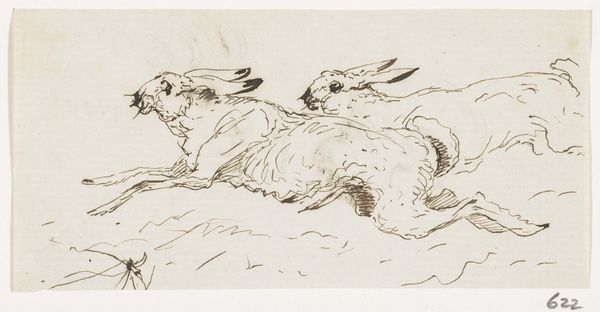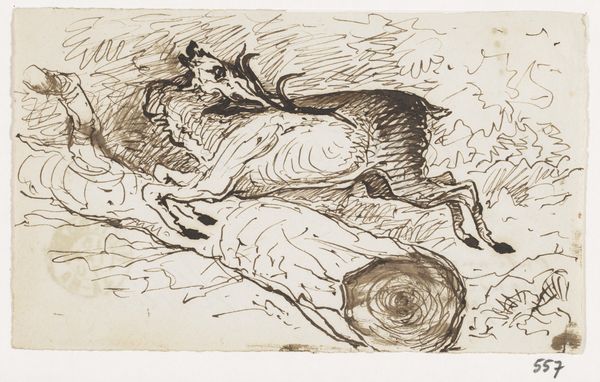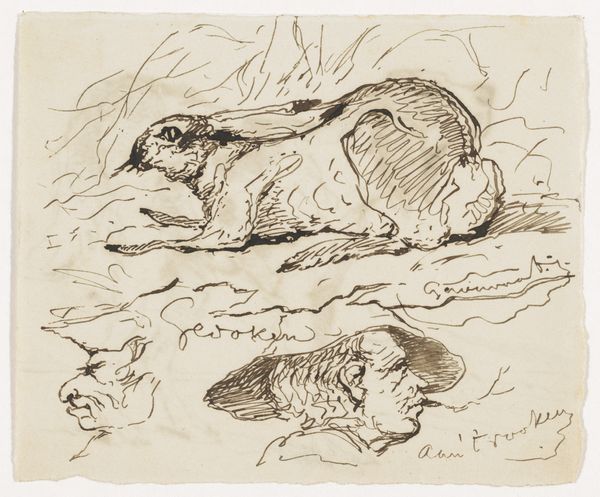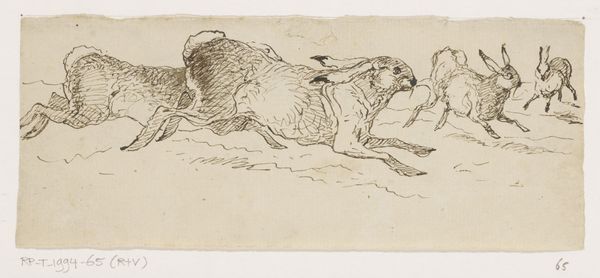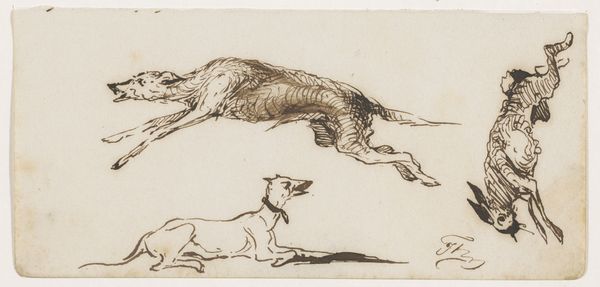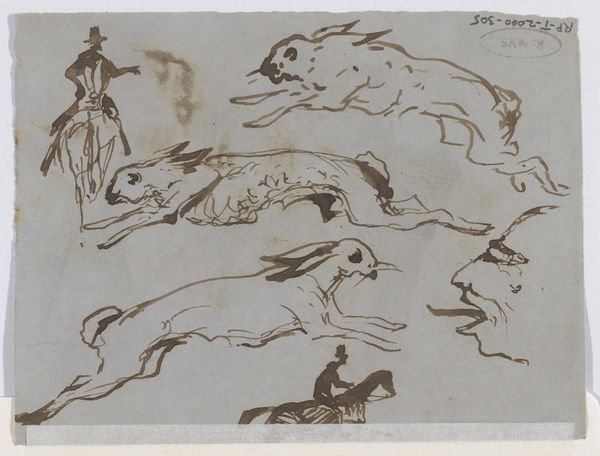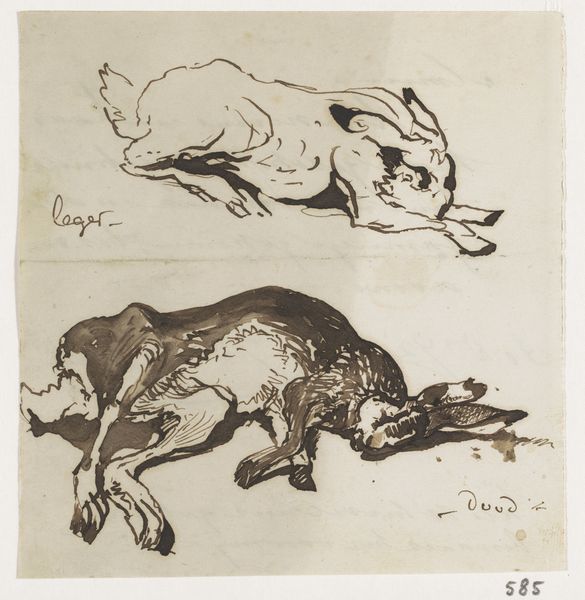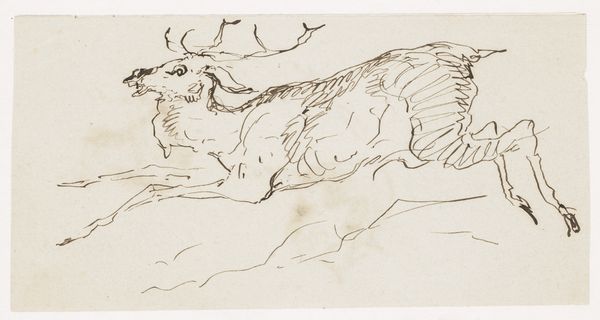
drawing, ink
#
drawing
#
pen sketch
#
pencil sketch
#
ink
#
ink drawing experimentation
#
pen-ink sketch
#
genre-painting
#
realism
Dimensions: height 106 mm, width 165 mm
Copyright: Rijks Museum: Open Domain
Editor: Here we have Johannes Tavenraat's "Studies van een levende en een dode haas," dating from 1840 to 1880. It's an ink drawing, quite stark in its presentation of life and death. What stands out to you about this piece? Curator: Well, at first glance, it’s easy to see this as a simple study in realism. However, I think it’s critical to consider the socio-political context. During the 19th century, hunting was heavily laden with symbolism connected to class and power. Can we see this work as a subtle commentary on this relationship? Editor: That's a perspective I hadn't considered. The contrast between the hares—one "living," one clearly "dead"—feels rather blunt when considering issues of class. What nuances might support a connection to power structures? Curator: Think about the language used in the notes within the work itself—the labeling, the almost scientific detachment in observing the animals. How might these ways of seeing reflect or reinforce power dynamics? What assumptions about who gets to observe, categorize, and ultimately control life and death are being laid bare? Editor: So, you're saying the artistic process itself, this act of capturing and categorizing, echoes the larger societal tendency to exert control, and perhaps objectify living beings, and, historically, entire social classes? Curator: Exactly. The piece can also bring discussions of animal rights and ecological awareness to the surface, issues with profound historical and contemporary relevance. Where does our authority to depict life and death originate, and what responsibility do we have to acknowledge it? Editor: I'm now seeing the drawing as less of a detached study, and more as a loaded question about humanity's relationship with both nature and power. Thank you for broadening my view! Curator: And thank you for being willing to explore the deeper implications within this seemingly simple drawing.
Comments
No comments
Be the first to comment and join the conversation on the ultimate creative platform.
